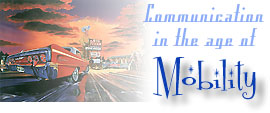
Office: HGH 210; phone: (408) 924-5378
Email: wooda@email.sjsu.edu
Web: http://www.sjsu.edu/faculty/wooda
 |
Dr. Andrew Wood Office: HGH 210; phone: (408) 924-5378 Email: wooda@email.sjsu.edu Web: http://www.sjsu.edu/faculty/wooda |
Introduction
: Course Calendar : Policies
: Readings
Assignments : Check Your Grades : Return
to Frontpage
Study guide: Focus on (1) Sa people's label for tourists, (2) contemporary tourism as "smokeless industry," (3) examples of Disneyfication, (4) local resistance to tourists, (5) examples of eco-tourism
In his article, "The Politics of Travel" Nicholson-Lord describes the common disdain folks have for tourists - "strangers en masse" - and their icons, from pointing sticks to video cameras: "The Sa people of Vanuatu, in the southern Pacific, have another, less complimentary, label. They call tourists aisalsaliri, or "floating ones" - people without place and the power of tradition that comes from place" (¶ 13). He also notes that, for its practitioners it represents a kind of secular pilgrimage, before introducing his thesis: contemporary tourism is hardly a "smokeless industry."
Supporting this claim, Nicholson-Lord notes that tourism is generally a low-wage industry which forces people into a cash-based global economy, depriving them of traditional means of support. Moreover, contemporary tourism, with its tendency to overbuild in fragile ecosystems and foster gas-gulping modes of travel - harms the environment. Finally, tourism inspires "Disneyfication" - the replacement of authentic local practices with homogenized fakes suited for tourist consumption. In response to these risks, and others, tourists have become threatened by a smattering of local resistance groups who no longer welcome their presence. Nicholson-Lord concludes by doubting whether current trends toward "life enhancing" eco-tourism can overcome the anger felt by many local populations against wealthy globe-girdling tourists.
Activity
Select a recent or historical advertisement, brochure, catalog, postcard, or other tourist artifact. For your Show and Tell activity, briefly describe the artifact before devoting the majority of your efforts to an analysis of whether it illustrates a component of Nicholson-Lord's thesis. Provide textual, graphical, or other symbolic examples from the artifact to support your analysis.